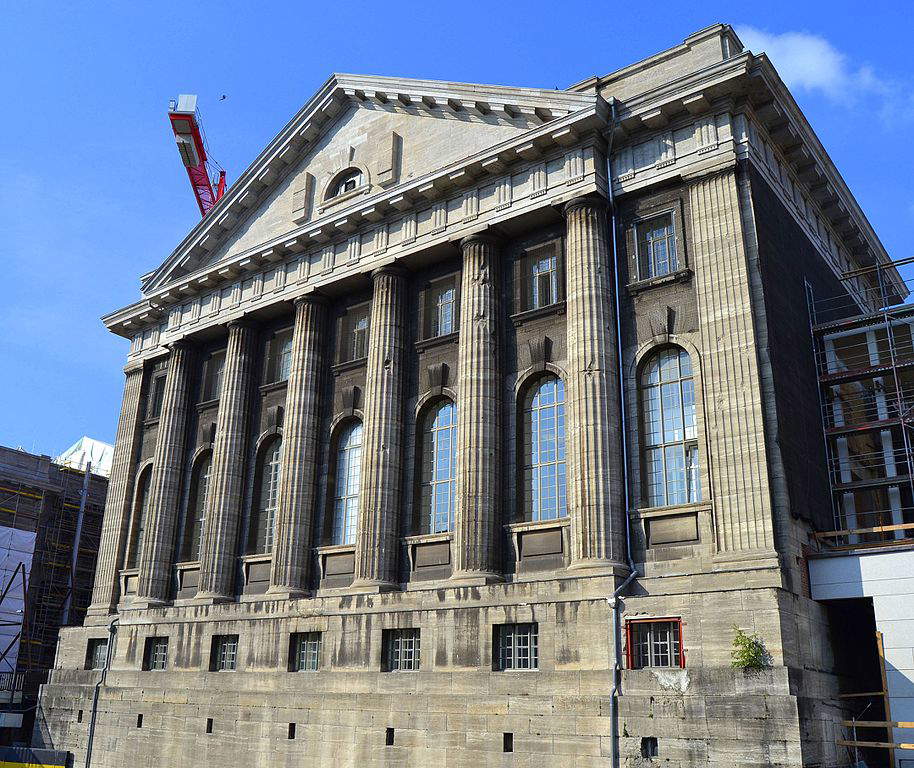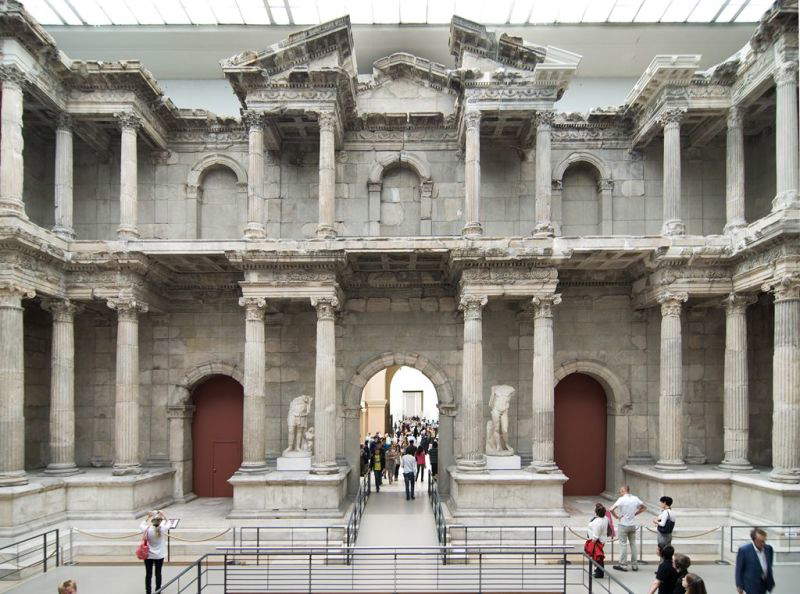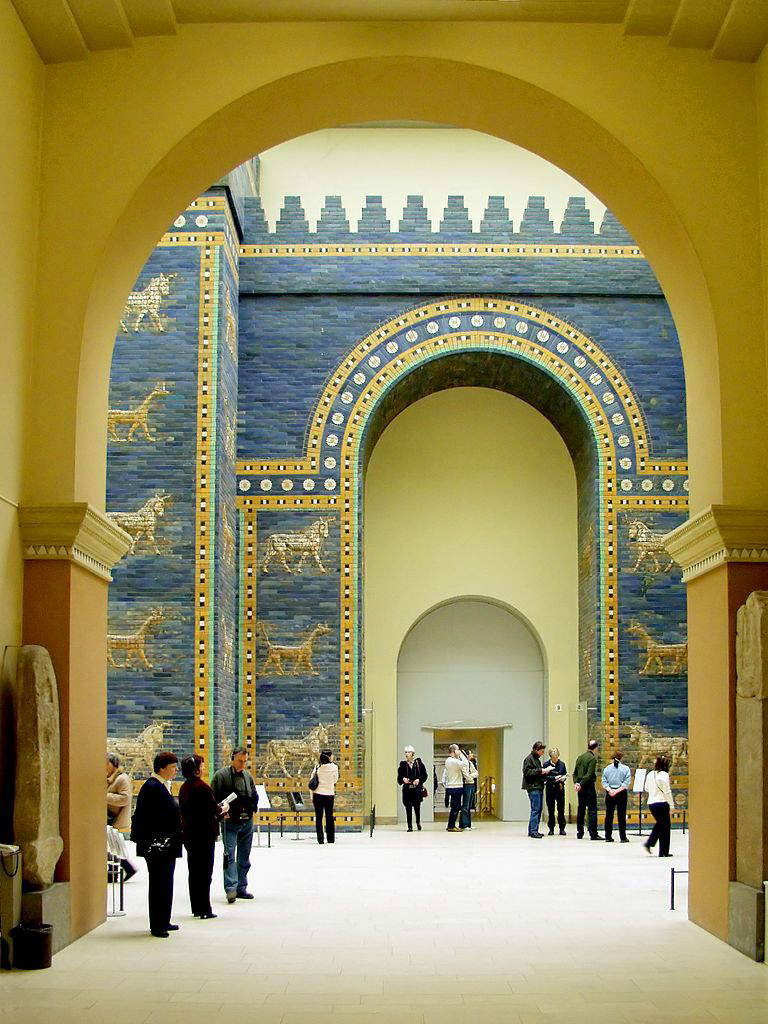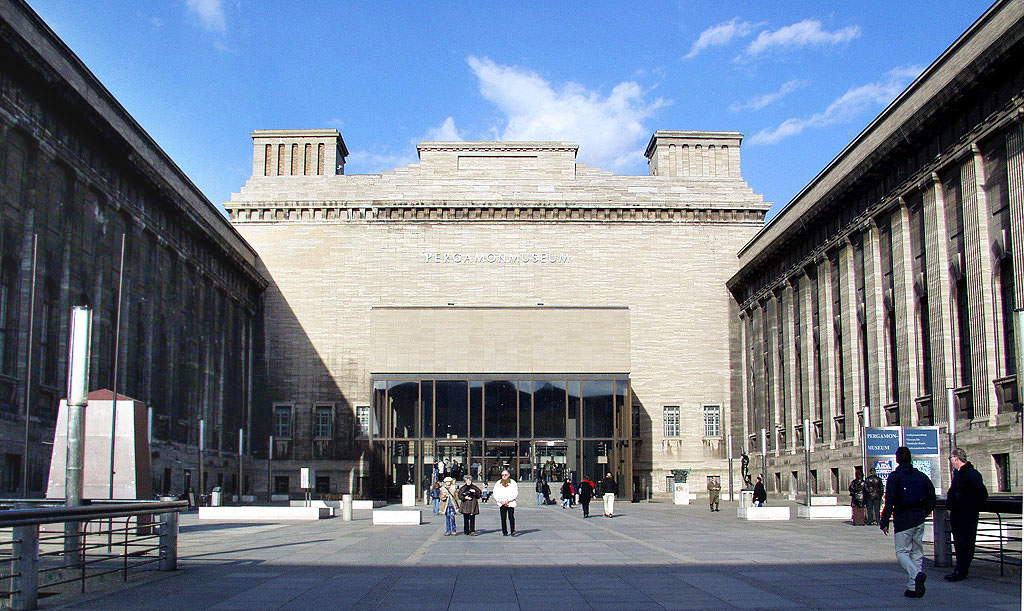Designed by architect Alfred Messel (Darmstadt, 1853 - Berlin, 1909) and built over a period of twenty years, from 1910 to 1930, under the supervision of Ludwig Hoffmann (Darmstadt, 1852 - Berlin, 1932), the Pergamonmuseum in Berlin is today the most visited museum in Germany. It is located in the center of the German capital’sMuseum Island and was initially designed for the purpose of housing artifacts from archaeological excavations that the Berlin Museums had conducted since the second half of the nineteenth century mainly in Greece and Turkey, although a collection of ancient works already existed in the city and was housed in the Old Museum, which was created in front of Berlin Castle. The building designed by Messel and Hoffmann is a large three-wing complex built to house three core collections: the Antikensammlung, or the ancient collection; the Vorderasiatisches Museum, or the Museum of Front Asia or the Museum of the Near East; and the Museum für Islamische Kunst, the museum of Islamic art. Beginning in 2013, a major renovation began that led to the closure of some portions of the museum, including the large Pergamon altar room.
The most famous part of the collection, the Antikensammlung, has its roots in the collections of the Elector of Brandenburg and the kings of Prussia who were his successors: it is 350 years old and is one of the largest collections in the world devoted to Greek and Roman antiquities, with statues, bronzes, vases and pottery, jewelry and applied arts, glass, ivories, architectural elements, tombstones and inscriptions. The time span goes from the Bronze Age to the late imperial age. Then there are also Etruscan objects and artifacts from Cyprus and the northern Black Sea. These are pieces that came to Berlin as acquisitions, as donations, or, as mentioned, from archaeological excavations that museum experts also conducted outside Germany (particularly in the nineteenth and early twentieth centuries, when it was normal... bring back “home” what was found in the context of an excavation). The Antikensammlung, moreover, is not only kept in the Pergamonmuseum: given its size, part of it is in the Altes Museum and another part in the Neues Museum.
 |
| The Pergamonmuseum, exterior. Photo M. Sheikho |
 |
| The Pergamon altar. Photo Jan Mehlich |
 |
| The Pergamon altar. Photo Berlin.de |
 |
| The Market Gate of Miletus. Photo Berlin.de |
 |
| The gate of Ištar. Photo Raimond Spekking |
 |
| The Pergamonmuseum, exterior. Photo Raimond Spekking |
The Vorderasiatisches Museum, which is an integral part of the Pergamonmuseum, on the other hand, collects artifacts from the Near East, arranged along a span of some six thousand years of history: these are mainly from Mesopotamia, Syria, andAnatolia. This, too, is one of the most impressive collections of its kind in the world, as it has about 270,000 objects, collected mainly during German excavations in Babylon, Assur, Uruk, and Sam’al. The same argument can be made for the Museum für Islamische Kunst, which houses one of the largest collections of Islamic art outside the Arab countries, with decorative artworks and archaeological artifacts made by Muslim populations as well as Christian and Jewish minorities who lived in Muslim-dominated countries between the 7th and 19th centuries.
Visitors, however, come to the Pergamonmuseum primarily to see thePergamon altar, which is one of the most famous structures in Hellenisticart, and was commissioned in honor of Zeus by Eumene II, king of Pergamon from 197 B.C. until the year of his death, 160 B.C. The altar was meant to celebrate Pergamon’s victory over the Galatians in 166 BCE and is a large colonnade rising on a base (in all, the structure is 25 meters high and 35 meters wide) that is quadrangular with two foreparts that give it its characteristic “U” shape. 120 meters long in its entirety, it is decorated with panels 228 centimeters high and between 70 and 100 centimeters wide each: the frieze depicts the battle of the Olympian gods against the Giants and is a masterpiece of Hellenistic art. The altar, which dominated the acropolis of Pergamon (the center is located in Asia Minor, in present-day Turkey, near the city of Smyrna), was discovered by the German engineer Carl Humann, who had been commissioned by the Ottoman Empire to design a road in the area: following the discovery, the archaeological excavation began, which set out to study the altar and understand what was left. The western pediment was transported to Berlin in 1886 with the consent of Sultan Abdul Hamid II, and in the German capital the altar was reassembled according to archaeologist Otto Puchstein’s reconstruction. During World War II, the Pergamon altar was again disassembled to be secured from bombing in Berlin’s Flakturm, but the complex’s troubled vicissitudes were not over, for in 1948 it was taken by the Red Army, which sent it to Leningrad: it did not return to Berlin until 1958, as a gift from the Soviet Union to the GDR.
However, the altar is not the only marvel capable of astonishing the public at the Pergamonmuseum: in fact, the institution preserves other structures that are no less impressive. Two are worth mentioning: the first is the Market Gate of Miletus, from the ancient city of Asia Minor. It dates back to the second century A.D., and was the gate (thirty meters wide, sixteen meters high, and five meters deep) that led to the market square of Miletus: it was unearthed in the early twentieth century by a team of German archaeologists working in the city, and they resurrected the fragments of the construction (which was destroyed during an earthquake between the tenth and eleventh centuries) to put it back up in Berlin. The gate we see today, moreover, is the result of a reconstruction that also used new materials, since not everything original was saved. The second is the Ištar Gate, one of the ancient city gates of Babylon, which surprises the public with its blue walls with glazed ceramic decorations depicting lions, dragons, bulls, and flowers. Dating back to 575 B.C., the Babylonian gate reached Berlin in the same way as the other structures: discovered by archaeologists and sent to Germany.
As of November 2018, the museum opened a new space, called Pergamonmuseum: The Panorama: this is a pavilion for temporary exhibitions built by the Stiftung Preu�?ischer Kulturbesitz. The building is designed to offer the public a viable alternative to the Pergamon Altar Hall during its renovation (which is expected to be lengthy), and is located across from Museum Island. However, the Pergamonmuseum often hosts level-headed exhibitions on archaeology and beyond, and since the institution is heavily visited and frequented by Berliners is tourists it is always advisable to book your ticket in advance.
 |
| The Pergamonmuseum in Berlin, the home of the great Pergamon altar |
Warning: the translation into English of the original Italian article was created using automatic tools. We undertake to review all articles, but we do not guarantee the total absence of inaccuracies in the translation due to the program. You can find the original by clicking on the ITA button. If you find any mistake,please contact us.